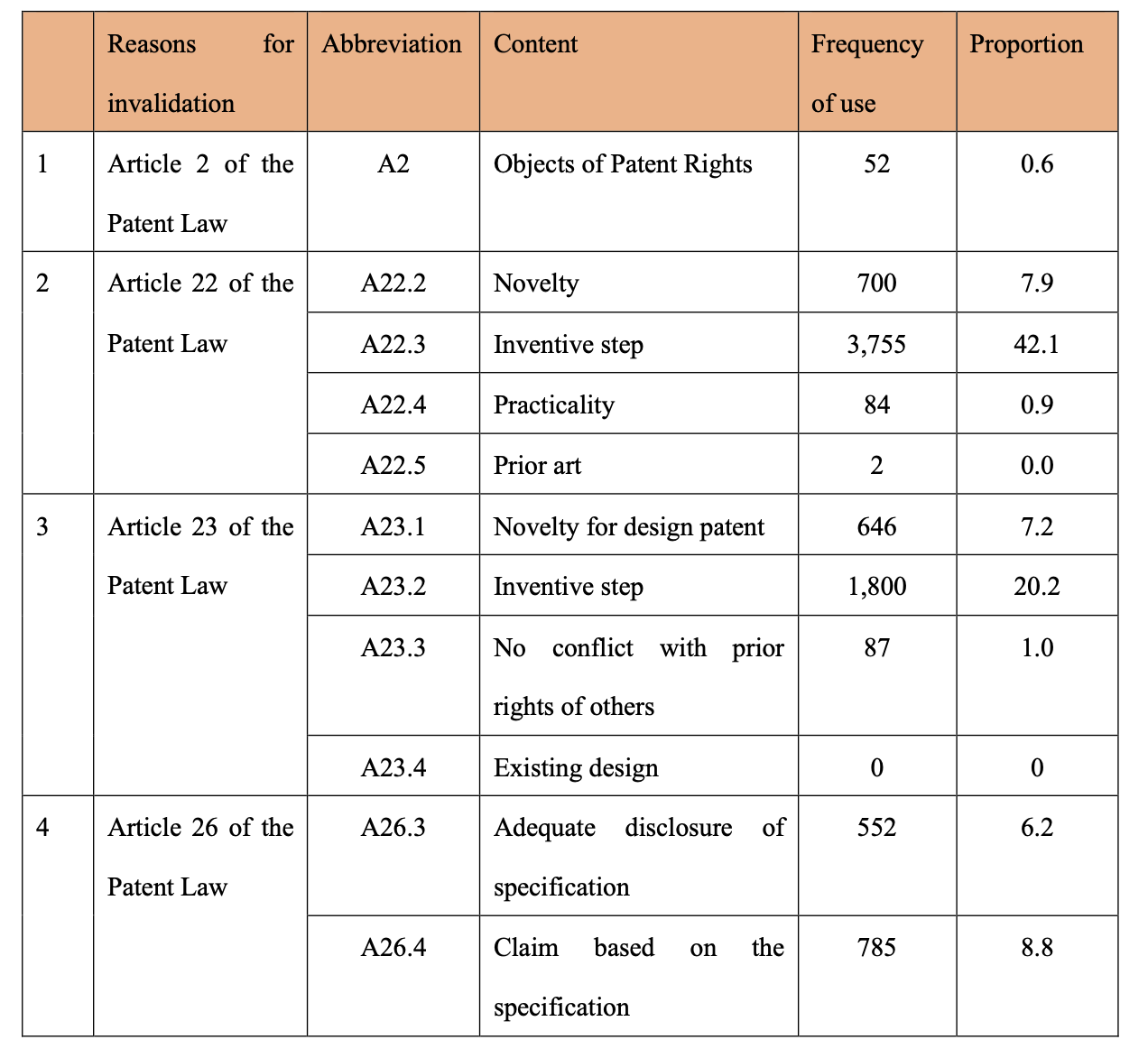CHANG TSI
Insights
On September 4, 2023, China’s third-party media released the China Patent Invalidity Data Quick Check Manual (2023 Edition). In this manual, the overall situation of China patent invalidation is introduced, including statistical analysis of the parties, trial cycle, and legal basis. Based on the manual, this report has compiled some key data for your reference.
According to data released by the Patent Reexamination and Invalidation Department (Hereinafter referred to as “PRID”) of the China National Intellectual Property Administration (Hereinafter referred to as “CNIPA”), the completion period for invalidation cases in 2021 is 5.8 months. This is the time from the first invalidity review, excluding cases that have been retried after the judicial review decision was withdrawn.

Figure 1 Flow chart for Patent Invalidation
1. According to data released by the PRID, 7,065 invalidation cases were concluded in 2021. Comparing China's annual application cases, granted cases, acceptance of request for reexamination, reexamination cases concluded, and acceptance of request for invalidation, invalidation cases concluded, it can be seen that there will be one reexamination for every 50 patent application cases and one invalidation request for every 600 patents granted.

2. Remain valid: Partially invalid: Fully invalid≈4:1:5
In 2022, 51.6% of patents fully invalidated, 10.3% will be partially invalidated, and 38.1% will remain valid. Compared with 2021, the proportion of all invalid cases increased by 2.3%.
Table 1 Patent invalidation decision cases


3. Invention patents are the most stable and the most difficult to be invalidated
Taking all the data in 2022 as a reference, the difficulty coefficient of invalidating all invention patents is the largest, 1.5 (51.6%/34.8%); the difficulty coefficient of invalidating all utility models is 1.0; and the difficulty coefficient of invalidating all designs is 0.8.
Table 2 Proportion of invalidation results for three types of patents

*Difficulty coefficient for all invalid= Proportion of all invalid in the full set / proportion of all invalid in the subset
1. Inventive step, the soldiers must fight
Inventive step is the hot spot of patent invalidation. Even if the patent is invalidated, it is not an exaggeration to say that the dispute is about inventive step.
As shown in the table below, among the many available grounds for invalidation listed, A22.3 are the most frequently used (Inventive step of invention and utility model, 3,755 times), followed by A23.2 (Inventive step of design, 1,800 times).
Inventive step-related provisions were used by invalidation claimants in a cumulative total of 5,555 cases, involving 87.2% of the total cases (5,555/6,374).
Table 3 Frequency of reasons for invalidation(based on invalidation decisions in 2022)

2. A26.3/A26.4: High suspicion rate, high successful invalidation rate
Inventive step in patent invalidation means high suspicion rate and high successful invalidation rate; while A26.3/A26.4 means high suspicion rate and low successful invalidation rate.
In 2022, 3,289 invalidation decisions were invalidated, with 6,457 Legal basis used. Combined with the usage of Legal basis and the content shown in the table below, Inventive step-related clauses (A22.3, A23.2) are used more frequently as Legal basis and are also prominent in the basis for successful invalidation. In comparison, A26.3/A26.4 has a high usage rate and low success rate.
Table 4 Legal basis for successful invalidation used in invalidation decisions

IV. The Parties
1. Time to invalidate three types of patents
The three types of patents that have become the focus of controversy also have their own cycles: 10 years for inventions, 4 years for utility models, and 3 years for designs.
Figure: Time to invalidate three types of patents

This data can be used as one of the reference indicators for patent management by patentees. In the 14th year of invention patent application, the 6th year of utility model application, and the 5th year of design application, 80% of patent invalidations have already occurred if they would occur. For some important patents, even if the protection period has expired, disputes continue.
2. To be focus, choose the right type
When companies carry out patent arrangements, it is important to choose the appropriate type of patent, such as invention, utility model and design, combined with the shape of their products.
In terms of patent invalidation, there is a big difference in the types of patents invalidated by invalidation applicants.
The establishment of the patent invalidation system is to correct the CNIPA decision to grant patent rights to inventions that do not meet the conditions stipulated in the patent law, maintain the fairness of patent rights, and protect public interests. In Chinese judicial practice, the alleged infringer’s request to invalidate the patent involved has almost become an “inevitable step” in patent infringement litigation. Therefore, the patent invalidation procedure is of great significance to both the patentee and the public.


